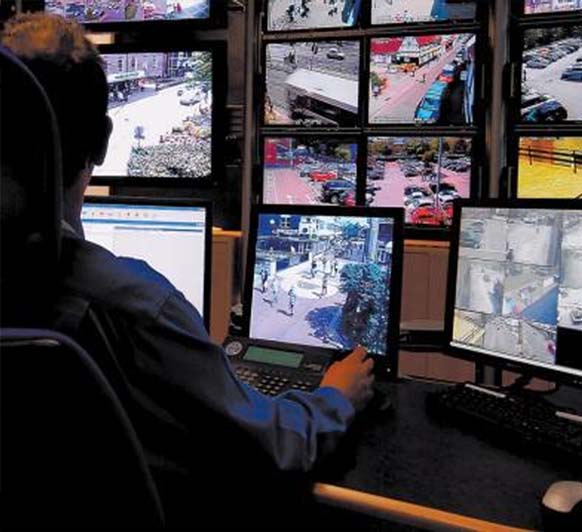
Login Into Your Account

Reset Password
Law enforcement Technology,Law enforcement Agency,Policing Technology,Smart Policing India,Homeland Security India,Border Security India,Border Management India,Cyber Crime news,Cyber Security news,Safety App,Public Safety App,Security App,Women Safety App,Police Initiative,Surveillance news,National Security news,isc event 2016,isc event 2017,scada event 2016,scada event 2017,Critical infrastructure security event 2016,Critical infrastructure security event 2017,iot summit 2016,iot summit 2017,Internet of things seminar 2016,Internet of things seminar 2017,iot seminar delhi 2016,iot seminar delhi 2017,iot conference delhi 2016,iot conference delhi 2017,top security event,security event,security event 2016,security event 2017,security conference 2016,security conference 2017,cso summit 2016,cso summit 2017,Corporate security event,Corporate security conference,security research india,homeland security research india,security think tank india
Law enforcement Technology,Law enforcement Agency,Policing Technology,Smart Policing India,Homeland Security India,Border Security India,Border Management India,Cyber Crime news,Cyber Security news,Safety App,Public Safety App,Security App,Women Safety App,Police Initiative,Surveillance news,National Security news,isc event 2016,isc event 2017,scada event 2016,scada event 2017,Critical infrastructure security event 2016,Critical infrastructure security event 2017,iot summit 2016,iot summit 2017,Internet of things seminar 2016,Internet of things seminar 2017,iot seminar delhi 2016,iot seminar delhi 2017,iot conference delhi 2016,iot conference delhi 2017,top security event,security event,security event 2016,security event 2017,security conference 2016,security conference 2017,cso summit 2016,cso summit 2017,Corporate security event,Corporate security conference,security research india,homeland security research india,security think tank india
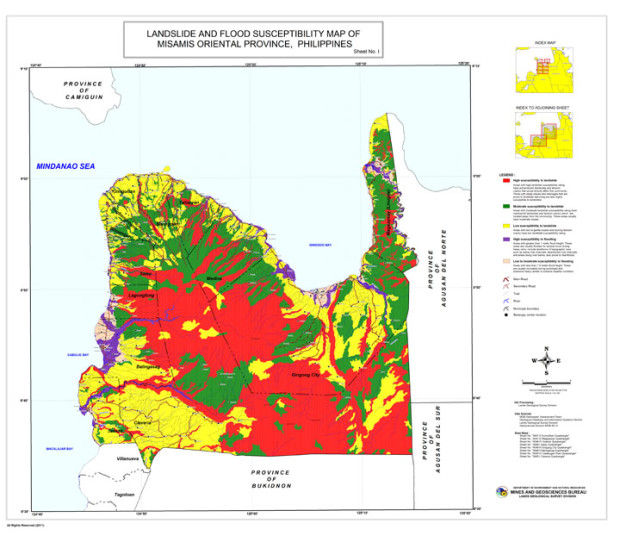
CoA flags inadequate rules on disaster risk assessment
The CoA recently issued its 33-page performance audit report on the Geo-Hazard Mapping and Assessment Program, which stressed the need to “adopt clear-cut policy guidelines or procedure” in updating the geo-hazard maps that provide information on areas at risk during disasters.
Although it noted the Mines and Geosciences Bureau had undertaken the updating of hazard maps in 2015, the audit report still cautioned that the lack of guidelines would result in a lack of consistency.
Even as the maps of three mapping agencies—MGB, as well as National Mapping and Resource Information Authority and the Department of Science and Technology—have been serving different purposes, the CoA said guidelines should be laid out to ensure accuracy.
No guidelines on coordination
The CoA also reported that the National Disaster Risk Reduction Management Council (NDRRMC) and the Department of Science and Technology (DoST) have not issued adequate guidelines on inter-agency coordination.
This meant that the implementation of the National Disaster Risk Reduction and Management Plan (NDRRMP) has not been well-coordinated and the accountability of the agencies has not been well-defined.
“Hence, the country’s DRRM is wanting of clear policy guidelines for a well-coordinated disaster prevention and mitigation efforts,” the report read.
The report said that despite their vital roles, the DoST and the Office of Civil Defense have not reviewed and monitored the Mines and Geosciences Bureau’s planning of the updates on the Geo-Hazard Mapping and Assessment Project (GhMAP).
DoST and OCD serve vital functions as vice-chairperson for disaster prevention and mitigation and lead agency for enhanced community-based monitoring, respectively.
But, the CoA said they have only supervised the projects they implement, and have not coordinated and reviewed the updating of the GhMAP.
No budget for monitoring
The CoA also observed that the OCD had inadequately monitored the program, which meant there was no assurance that the effectiveness of the program had been consistently evaluated.
The OCD is responsible for ensuring the implementation of the NDRRMP, and the integration of local governments’ DRRM plans in their development and land use plans.
But, the CoA found that the OCD was unable to validate the agencies’ accomplishment reports because, from 2013 to 2015, Congress did not at all provide it with the capital outlay to purchase the necessary equipment. OCD also turned out to be understaffed, as only 59 percent of its 644 positions were filled up.
Well-utilized
Still, the CoA found that generally, local government units were able to utilize the geo-hazard maps in formulating their local disaster preparedness and comprehensive land use plans.
It cited a survey of 79 local government units in Central Luzon, Calabarzon, and Western Visayas. Seventy-six of them (96 percent) have taken the maps into account for their planning activities, although only 45 of the LGUs (60 percent) used the latest maps provided by MGB.
Even then, the disaster risk assessment helped “contribute to the reduction of vulnerabilities and exposure of communities in case of disasters,” the report noted.
It highlighted Antipolo City, site of the deadly Cherry Hills Subdivision landslide in 1999, as well as Pasig City as examples of cities that have integrated the disaster preparedness plans into their zoning ordinances. Marikina City, meanwhile, was cited for initiating a “systemic evacuation program or camp management system.”
At the time of the audit of the geo-hazard program, no government-wide or sectoral audit of disaster management had been conducted.
The CoA only recently released its first-ever audit on government agencies and units’ use of disaster risk reduction and management funds, finding that local governments and the Department of National Defense have failed to comply with pertinent rules. SFM/rga
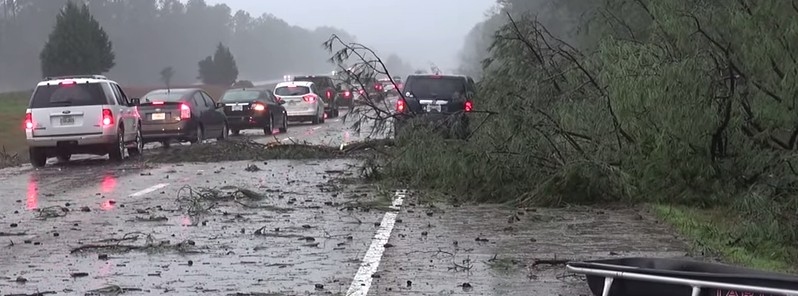
Powerful storms kill 16 in southeast US
A rural part of south-central Georgia was hardest hit, leaving at least twelve people dead, according to the state's Emergency Management and Homeland Security Agency (GEMA/HS).
Four others died and 20 were injured on Saturday morning by a tornado that swept through southern Mississippi, according to that state's emergency services agency.
In Georgia, eight of those killed died in southern Cook County, seven of them at a trailer park, Cook County coroner Tim Purvis told the Atlanta Journal-Constitution.
Elsewhere in the state four people died, with three confirmed injuries, according to GEMA/HS.
The National Oceanic and Atmospheric Administration reported extensive damage in some parts of Georgia, with numerous felled trees and downed power lines in several counties.
Although storms have passed, authorities warned that a second line of severe weather is advancing, with the threat of more heavy rain and powerful winds.
The National Weather Service warned of an "increased threat of strong, long-track tornadoes," that could hit northern and central Georgia yesterday evening.
Some areas have already received four inches (10 centimeters) of rain and could get up to three additional inches, the NWS said.
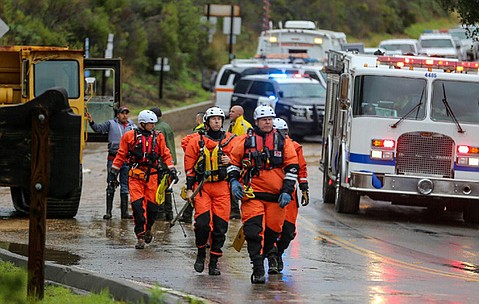
Public Safety Officials Urge Caution During Heavy Storm
At 9 a.m. this morning, city firefighters were dispatched to 47 Broadmoor Plaza after a debris flow formed behind numerous nearby apartment complexes. Crews went door-to-door evacuating residents who were then assisted by the Red Cross. Multiple buildings sustained minor damage and the flow is being monitored for any additional movement.
Mud flow at Sycamore Canyon Road Click to enlarge photo Courtesy Photo
Mud flow at Sycamore Canyon Road
At around the same time, a separate city firefighting team responded to a mud flow across the 1600 block of Sycamore Canyon Road. A vehicle with a single occupant was trapped in the debris. A tow truck was used to pull the car to safety. Sycamore Canyon Road remains closed at the Alameda Padre Serra roundabout and at Stanwood Drive until Caltrans crews can clear the roadway.
"The City Fire Department would like to advise their residents and visitors to stay indoors during the rough weather," said a department spokesperson. "If you must drive please use extreme caution and slow speeds."
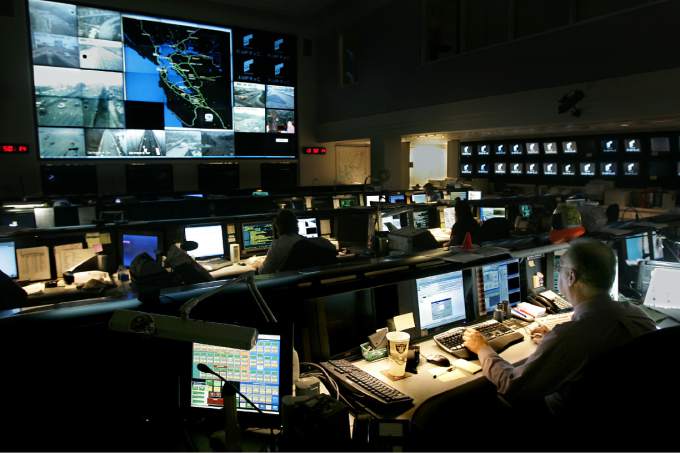
Separate control rooms set up for disaster management, poll purposes
District magistrate Ravinath Raman directed the disaster management control room team to offer timely assistance to callers in distress. The team members informed him that all five roads to Chakrata that were blocked due to snowfall were cleared by Sunday.
The DM also directed the election control room team to be fair and fearless in taking action on complaints regarding violation of the model code of conduct. R C Bahuguna, nodal officer of election control room, told TOI that only one complaint was received at the control room so far. "The complainant alleged that 500 old pipes were replaced with new pipes after the model code of conduct came into force. During an inquiry, executive engineer of Jal Sansthan informed us that the pipes were already there even before the poll code was enforced."
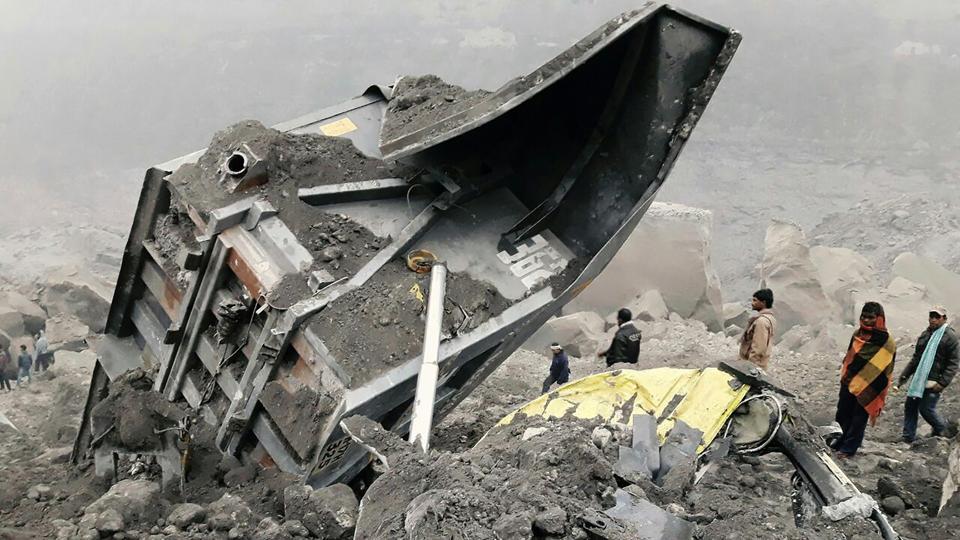
Mine collapses in Jharkand's Lalmatia, seven people killed
A heap of mud caved in at the entry point of the Latmatia mines of Eastern Coalfields Limited (ECL) in Godda district, police said. The collapse occurred at 8:30pm yesterday, the state disaster management department said.
"So far, bodies of seven miners have been recovered from the mine. Rescue work is on," RR Mishra, officiating CMD of ECL, said. Police said two persons were injured in the incident and were being treated at a hospital.
About 40 workers are suspected to be still trapped under the debris.
Several vehicles were also trapped, according to police.
Rescue work started after midnight, the disaster management department said. Four workers have been rescued, and have been admitted in a hospital at Mahagama in Godda. The condition of one of the workers is reportedly serious.
Jharkhand Chief Minister Raghubar Das is closely monitoring the situation, and has asked concerned officials to intensify rescue operations.
"Saddened by the loss of lives at a mine in Jharkhand. My prayers are with those trapped inside. Spoke to CM Raghubar Das on the situation "Modi said on twitter.
Narendra Modi ✔ @narendramodi
Jharkhand Government & Minister @PiyushGoyal are working to restore normalcy. @NDRFHQ has been engaged for rescue & relief operations.
Expressing sorrow, the Jharkhand Chief Minister today announced assistance of Rs two lakh for the families of the miners who died in the accident.
He also announced Rs 25,000 to the injured, official sources said.
"All senior officials have been asked to stay at the site," the CM said on twitter.
Coal India has been requested for a mining rescue station team with specialized equipment.
At the time of the cave-in at the Rajmahal Open Cast Mines of Paharia Bhorya site, more than 70 vehicles were inside.
Rescue operation could not begin due to night fog, the police said.
The National Disaster Response Force (NDRF) team reached around 11am from Patna.
The local police and administration were also involved in the rescue operation.
The Director General of Mines Safety (DGMS) has sent a team to the spot to investigate.
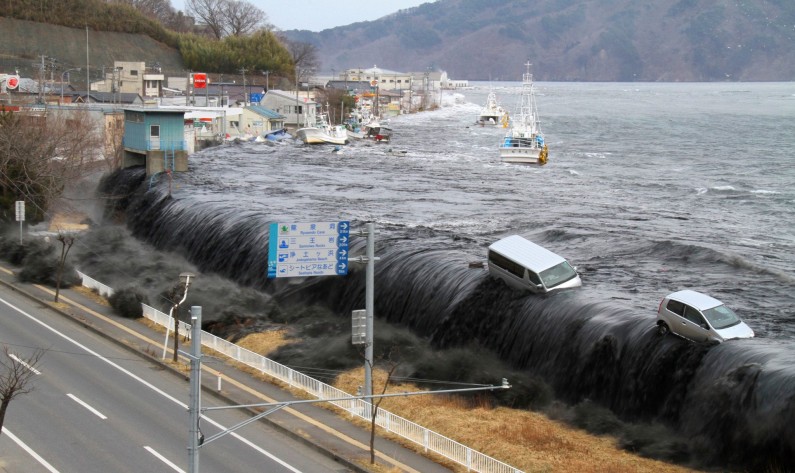
Protection from Tsunami
Dr Satheesh C Shenoi
Where there is a will, there will be a way. India has proven this axiom once more with aplomb.
Cut back to year December 26, 2004, the day world's one of the most devastating disaster struck killing 2,30,000 people in 14 countries along the rim of the Indian Ocean. Massive waves swept away buildings and people as if they were just pieces of paper. The damage was worst in Indonesia, Thailand, India and Sri Lanka. In India, an estimated 10,749 persons lost their life and 5,640 people were reported missing.
The disaster led to much soul searching as it soon became clear that much of the casualty could have been avoided if only there had been an early warning system for tsunamis in the Indian Ocean region. There were two tsunami warning centres at the global level. But, they catered to the pacific region only. Nobody expected a tsunami in the Indian Ocean.
The Tsunami was generated by an undersea earthquake about 250 km south west of the Indonesian city of Banda Aceh and it took anywhere between 15 minutes to seven hours for the fatal waves to reach the various coastlines.
The northern regions of the Indonesian island of Sumatra were hit very quickly. But, east coast of India was affected two hours later and west coast in four hours.
In other words, there was enough time to warn the people in India. Seismologists knew that a massive earthquake with a magnitude of 9.3 on the Richter scale had occurred. But, it was not known that it had generated a tsunami.
As a result, huge tsunami waves swept India, Sri Lanka, Indonesia, Thailand and other countries along the Indian Ocean with no warning what so ever. In India, the coastal communities in Tamil Nadu, Puducherry, Andhra Pradesh, Kerala, and Andaman and Nicobar Islands were devastated.
Since then, the situation has undergone a sea change. Today, a 24X7 early warning system is operational. It has a capability to issue tsunami bulletins in less than 10 minutes after any major earthquake in the Indian Ocean. This provides a response/lead time of about 10 to 20 minutes to regions nearer to the epicentre of the quake and a few hours in the case of regions further away.
The great Indian Ocean tsunami occurred on December 26, 2004 and within a year the Government approved the setting up of an early warning system after detailed brainstorming sessions with experts in the field both within and outside the country. Set up at a cost of Rs. 150 crore, the system became operational on October 15, 2007. Initially, it had a capability to issue a warning within 20 minutes. It has since then been fine tuned and first warning is now available within 10 minutes.
The Indian Tsunami Early Warning System [ITEWS] comprises of a real time network of seismic stations, tsunami buoys and tide gauges. These are linked to a state-of-art tsunami centre – Indian Tsunami Early Warning Centre [ITEWC], where the data are analysed using high power computational systems. Advisories are issued automatically to the various stakeholders beginning from the Ministry of Home Affairs and the National Disaster Management Authority to State and district level disaster management centres for necessary follow up action.
The ITEWC is located at the Union Ministry of Earth Science's Indian National Centre for Ocean Information Services [INCOIS] in Hyderabad.
The real time seismic monitoring network comprises of 17 broadband seismic field stations transmitting real time data through V-SAT communication to the central receiving stations located at INCOIS and the National Centre for Seismology at New Delhi simultaneously for processing and interpretation. In addition, data from around 300 global seismic stations is received at INCOIS in near real time. These data sets form the basis for determining the preliminary parameters of earthquake epicentre, focal depth and magnitude. The earthquakes are auto-located within 5-10 minutes of occurrence.
The brain of the early warning system is a state of the art decision support system at ITEWC, which has a database of all possible earthquake scenarios for the Indian Ocean.
The moment a tsunamigenic earthquake -- an undersea quake with a magnitude of 6.5 and above occurs, the decision support system gets activated and rapidly goes through the database and fishes out the matching advisory.
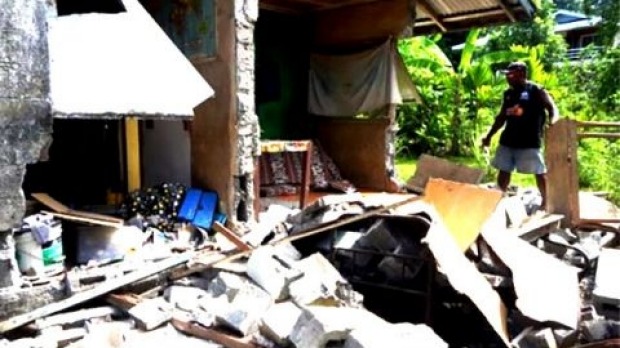
Strong quake strikes near Solomon Islands; no tsunami threat
The magnitude-6.7 quake was likely an aftershock of a powerful earthquake that hit the Solomon Islands on December 9.
That magnitude-7.7 quake killed one person and left hundreds with homes that were damaged or destroyed. The earlier earthquake also triggered dozens of strong aftershocks.
The US Geological Survey said Tuesday's quake was centered about 80 kilometers northwest of Kirakira and 160 kilometers southeast of the Solomon Islands' capital, Honiara. It had a depth of 35 kilometers.
A man who answered the phone at the Solomon Islands National Disaster Management Office said the quake did not feel particularly strong where he was located in the capital, but that they were still awaiting reports from those parts of the island nation nearest the epicenter. He said he didn't have any reports of damage or injuries.
The Solomon Islands sit on the Ring of Fire, the arc of seismic faults around the Pacific Ocean where earthquakes are common.
There was also another big earthquake in neighboring Papua New Guinea on Saturday. That magnitude-7.9 quake knocked out power in parts of Papua New Guinea and triggered a small tsunami.

Disaster-proof your home and car
Given the uncertainty, a comprehensive insurance cover for your home and vehicles can be of help, irrespective of where you reside.
Car insurance
A motor insurance policy has two parts — an own damage (OD) cover and a third-party liability cover. While the third-party liability cover is compulsory, the OD cover is optional. Damages due to a natural catastrophe, such as a cyclone, fall under the OD cover.
In the Chennai floods last year, many car insurers rejected claims for repair or replacement of the engine as, in most cases, it was a ‘consequential loss’ as the owner tried to move the vehicle through a water-logged area. Consequential losses are not covered under the regular motor insurance policies as they are not the outcome of a catastrophic event, but the result of a certain action of the policyholder, says Sanjay Dutta, Chief Underwriting Claims and Reinsurance, ICICI Lombard.
But in case of events such as cyclones, there is no such distinction, says Pankaj Verma, Head-Claims, SBI General. “If the car was parked under a tree and was damaged because of the high winds during a cyclone, resulting in the tree collapsing on the car, it will still be covered under motor insurance. Any act-of-god is covered under the insurance in a motor policy or fire policy, unless it is specifically excluded,” he explains.
Accessories such as music player, stereo system, parking camera and air-conditioner are not covered under the regular motor insurance policy unless you specifically ask for it and pay an additional premium.
Car interiors and upholstery are covered, but they attract high depreciation. For all rubber, plastic and nylon parts, tyres and tubes, batteries and air bags, the insurance cover assumes 50 per cent depreciation. For fibre glass components, 30 per cent depreciation is charged. For wooden, metal and other parts, depending on the age of the vehicle, depreciation may vary from 5 to 50 per cent.
To avoid any disappointments at the time of need, you can opt for add-on covers that come with the motor insurance policies, says Sasikumar Adidamu, Chief Technical Officer, Bajaj Allianz General Insurance. For instance, a consequential loss, say to the engine, will be covered under ‘engine protect’ or ‘engine secure’. You can also consider a ‘zero depreciation’ cover or what is called ‘bumper-to-bumper’ cover. This cover is slightly expensive but pays full price for claim on spare parts. ‘Invoice cover’ is another add-on. Here, the policyholder will be paid the cost of buying a new car of a similar make and model. The additional premium you will have to cough up for zero depreciation and invoice cover will be about 10-20 per cent.
Home insurance
In catastrophic events, not just the building but also the contents of the house get damaged. In the cyclone last week in Chennai, residents of the city saw severe damage to window-glass panels, doors, roof, compound wall, AC units kept in the terrace and furniture in the sit-out and garden. A home insurance will come in handy in such situations, says Nikhil Apte, Chief Product Officer, Royal Sundaram General Insurance.
For home insurance, you can either choose a basic fire policy or a comprehensive cover. While a fire policy may cover the house only against fire and allied perils, a comprehensive home insurance will also cover other risks, such as loss due to burglary or theft along with earthquake, fire, landslide, and flood. In case of fire policies, also note that any consequential loss will not be covered. For instance, in New India Assurance’s fire policy, any loss or damage to an electronic machine arising from short circuiting, or leakage of electricity, is excluded.
To cover the structure of your house, sign up for a ‘re-instatement cover’ rather than an ‘indemnity cover’. The former will compensate you for the cost of reconstructing the home; in the indemnity policy, the compensation is based on the re-construction cost less depreciation.
In addition, make sure you buy a policy that pays up for replacing the damaged contents. If you want a cover for electrical/mechanical break down, you should ask for it specifically, otherwise, it is generally excluded. Also, remember that DG sets and solar panels, which are usually installed outside the house, may not be covered under home insurance and one needs to specifically include these under the policy.
For content worth ₹4 lakh, the premium works out to ₹1,500-2,000 which is ₹4-6/day. For the structure, assuming sum insured of ₹50 lakh, the annual premium would be ₹2,500-3,500.
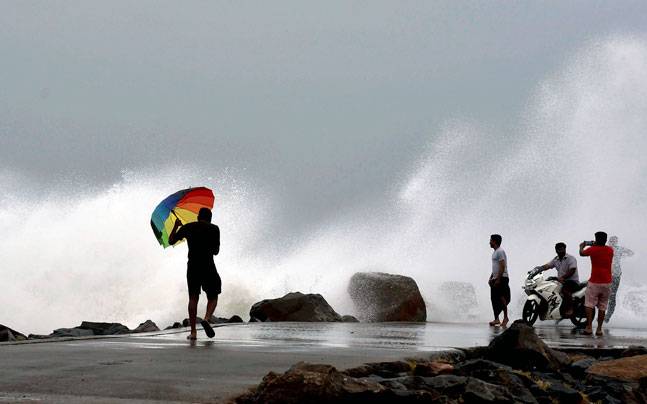
Cyclone Vardah Barrels Toward Chennai, Flights Hits Amid Heavy Rain: 10 Points
Flight operations were hit at Chennai airport. 15 flights were cancelled, 25 flights were diverted; 9 incoming flights delayed.
All schools and colleges have been ordered shut in Chennai, Kancheepuram and Tiruvallur, besides coastal areas of Villupuram. The Tamil Nadu Government has also asked private offices to allow their staff to take a day off or work from home.
Heavy rains and gusty winds lashed the northern coastal districts of Tamil Nadu, including Chennai today. Power supply was suspended in many parts of these regions as a precautionary measure.
The Met department says the sea will be rough along and off the Andhra Pradesh and north Tamil Nadu coasts. The fishermen have been asked to avoid the sea for the next 48 hours. People in low-lying areas have been asked to move to safer zones even as various government departments prep to deal with a possible crisis.
According to the Cyclone Warning Division of the India Meteorological Department, (IMD), Vardah, which is currently, a very severe cyclonic storm, will weaken, but only to a severe cyclonic storm. At 9:30 am, the cyclone was lay centered around 105 kms east-northeast of Chennai. By the time it makes a landfall, its wind speed is expected to be 100-110 kmph with winds gusting up to 120 kmph.
Tamil Nadu Chief Minister O Panneerselvam, who took office last week after J Jayalalithaa's death, held a meeting of the State Disaster Management Authority. "Arrangements to be made for evacuating people in low lying and vulnerable areas. Relief centres to be kept in readiness along with necessary food, water and other arrangements. Army, Navy, Air-force and Coast Guard have been alerted to be on standby for deployment as and when necessary," a statement from the chief minister's office said.
National Disaster Management Authority, in a tweet, advised people "to remain in safe places and cooperate with state government officials and disaster management agencies". Senior officials have been sent to the districts that are likely to be on the path of the cyclone.
The Navy said it is ready for relief operations. Their ships have additional divers, doctors, inflatable rubber boats, integral helicopters and relief material including food, tents, clothes, medicines and blankets fit for over 5,000 people. Besides, 30 diving teams with additional relief material are kept on standby.
The storm is expected to damage thatched huts, power and communication lines. Paddy crops and orchards may also be affected in Chennai, Thiruvallur and Kanchipuram districts of Tamil Nadu; Ongole and Nellore districts of Andhra Pradesh and Puducherry, the Met department said in its advisory.
Andhra Pradesh Chief Minister N Chandrababu Naidu also reviewed the situation through teleconference with top officials on Sunday evening. Food and other essential commodities have been kept ready in adequate quantities, he said.
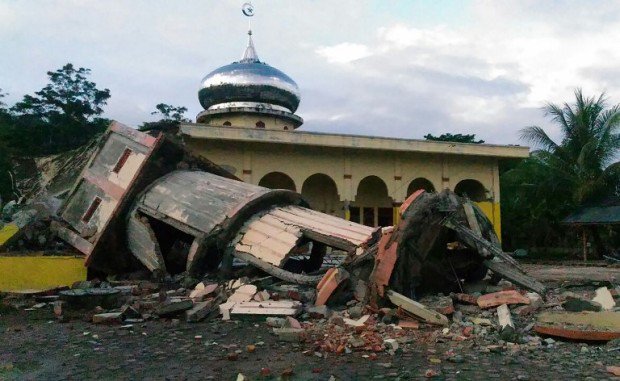
At least 25 dead after dozens of buildings collapse in 6.4 magnitude earthquake near Banda Aceh
The shallow 6.5-magnitude quake struck Pidie Jaya district at dawn, as some in the predominantly Muslim region prepared for morning prayers.
Mosques and shops were flattened in the small town of Meureudu, where the force of the quake sent people fleeing from their homes. No tsunami alert was issued.
The head of the local disaster agency, Puteh Manaf, said the sole hospital in the district had been overwhelmed by the number of injured.
"The data we have now is that 25 people have been killed and hundreds are estimated to have suffered injuries," he told AFP.
Local district secretary Iskandar Ali also confirmed the figure, citing preliminary data that showed at least 25 had died in the quake.
Rescue operations were under way to find those believed trapped beneath the rubble, with heavy machinery being used to shift the debris.
A witness said local residents were wandering the streets, unable to return to their damaged homes and fearing aftershocks.
Images from the scene showed homes levelled, mosque spires toppled and cars crushed under rubble.
Meureudu resident Hasbi Jaya, 37, said his family was asleep when the powerful quake struck.
"We immediately ran outside the house but it crumbled. Everything from the roof to the floor collapsed, and was destroyed," he told AFP.
"I looked around and all my neighbours' houses were also completely destroyed."
The local hospital was struggling to cope, with the injured being treated on the ground outside the front of the building.
Patients were also being sent to a neighbouring district with greater facilities, said deputy district chief Said Mulyadi.
He said at least seven children were among the dead, and many more had suffered broken bones and other injuries.
"There are many shophouses have caved in, and many (people) are alive but trapped," he told AFP.
Seismologists said the earthquake was felt across much of Aceh province, which was devastated by the 2004 Indian Ocean tsunami.
At least five aftershocks followed the quake, said Eridawati, local head of the Meteorology, Climatology and Geophysics Agency.
The US Geological Survey upgraded the magnitude to 6.5 from an initial reading of 6.4 and issued a yellow alert for expected fatalities and damage.
Indonesia experiences frequent seismic and volcanic activity due to its position on the Pacific "Ring of Fire", where tectonic plates collide.
ceh lies on the northern tip of Sumatra island, which is particularly prone to quakes.
In June, a 6.5-magnitude quake struck off the west of Sumatra, damaging scores of buildings and injuring eight people.
A huge undersea earthquake in the Indian Ocean in 2004 triggered a tsunami that engulfed parts of Aceh.
The tsunami killed more than 170,000 people in Indonesia and tens of thousands more in other countries around the Indian Ocean.
Newsletter
Sign Up for Monthly Newsletter
Recent Tweets
CONTACT US
Crux Center for Security
Research and Events (CCSRE)
3rd Floor, Tower-B, Unitech Cyber Park
Sector 39, Gurugram,122022
0124- 4207903, 05, 06
Copyright © 2016 Crux Center For Security Research And Events (CCSRE) | All Right Reserved
